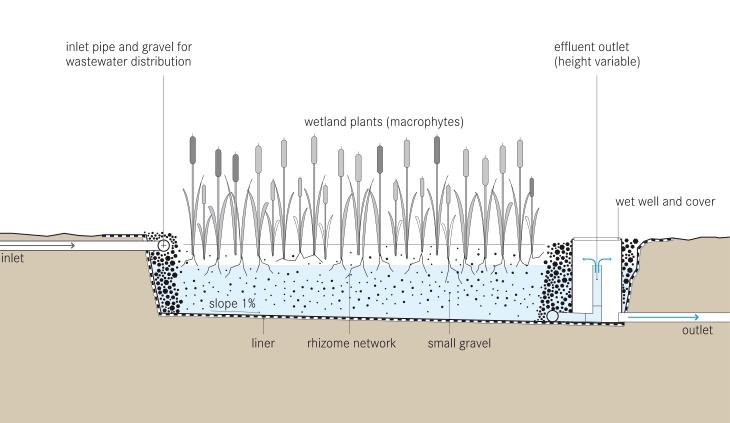Enviraj Consulting
Constructed Wetlands
| Constructed Wetlands | |
|---|---|
| Overview | Natural wetland systems have often been described as the “earth’s kidneys” because they filter pollutants from water that flows through on its way to receiving lakes, streams and oceans. Because these systems can improve water quality, engineers and scientists construct systems that replicate the functions of natural wetlands. Constructed wetlands are treatment systems that use natural processes involving wetland vegetation, soils, and their associated microbial assemblages to improve water quality. |
 |
|
| How Does it Works |
Constructed wetland is a shallow basin filled with some sort of substrate, usually soil or gravel, and planted with vegetation tolerant of saturated conditions. Water is introduced at one end and flows over the surface or through the substrate, and is discharged at the other end through a weir or other structure which controls the depth of the water in the wetland. As water flows through a wetland, it slows down and many of the suspended solids become trapped by vegetation and settle out. Other pollutants are transformed to less soluble forms taken up by plants or become inactive. Wetland plants(macrophytes) also foster the necessary conditions for microorganisms to live there. Through a series of complex processes, these microrganisms also transform and remove pollutants from the water. Nutrients, such as nitrogen and phosphorous, are deposited into wetlands from stormwater runoff, from areas where fertilizers or manure have been applied and from leaking septic fields. These excess nutrients are often absorbed by wetland soils and taken up by plants and microorganisms. |
| Pollutants Removed | COD, BOD, Nitrogen, Phosphorus, Pathogens, Heavy Hetals. |
| Area of Application | Household wastewater, agricultural, paper mill wastewater, mining runoff, tannery or meat processing wastes, storm water. |
| Environmental Footprint | Low |
| Area Footprint | High |
| Treatment cost per Cubic Meter | < ₹ 1 |
| Capital Cost | Morderate |
| O&M Cost | Low |
| Data Sources: | https://www.epa.gov/sites/production/files/2015-10/documents/constructed-wetlands-handbook.pdf |
